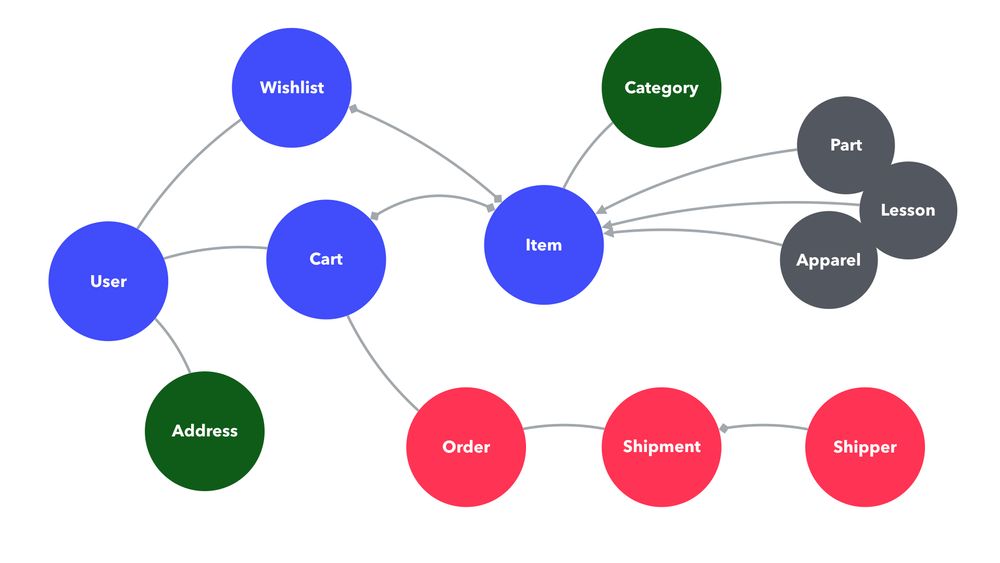Build an entity map
The story map exercise produced epics and stories from a perspective of business need. Say we’re building an e-commerce platform that sells replacement parts for milling machines. The client has identified that training materials and service apparel such as protective gloves, hard hats, and other branded swag are also often purchased together with parts and would like those items to have a place in the new e-commerce platform. The team produced a story map that captured the stated functional requirements—note the epics around parts, training materials, and apparel.
Once the rush of the workshop subsided, the engineering team started mapping out the major functional components of the system and identified shared characteristics between parts, training materials, and apparel—all of them being products that could be added to a cart.
The relationships allowed the team to see patterns emerge. As long as correct architecture and technical design decisions were made, parts, swag, and training materials could all be treated as items in the system. The entity map simplified the overall design of the platform and allowed the team to refactor the story map with the system design in mind:

While somewhat oversimplified, this example demonstrates that a story map alone does not lead to a well-designed system. Identifications of involved entities and relationships leads to better products.
Identifying entities and their relationships leads to better product design.